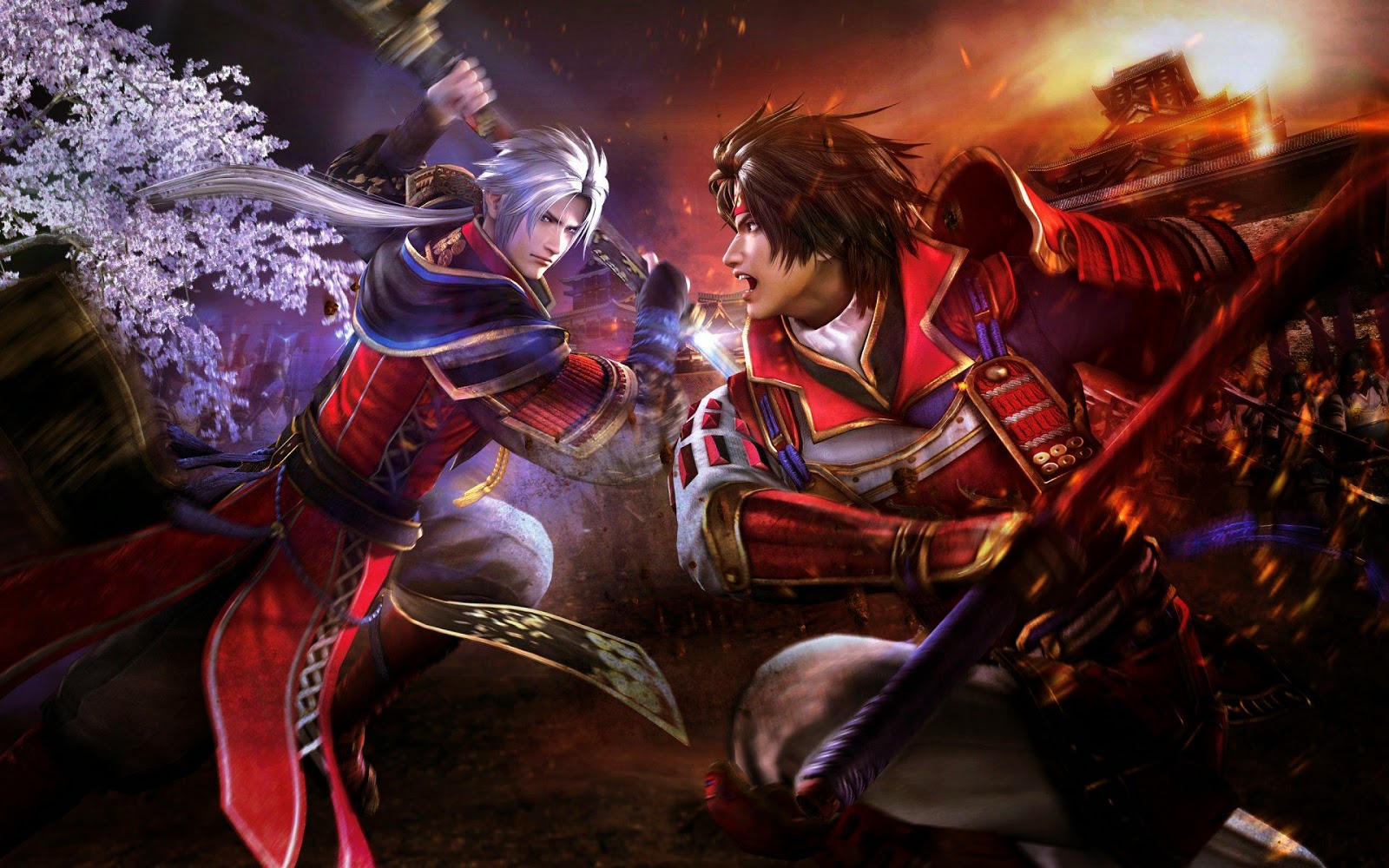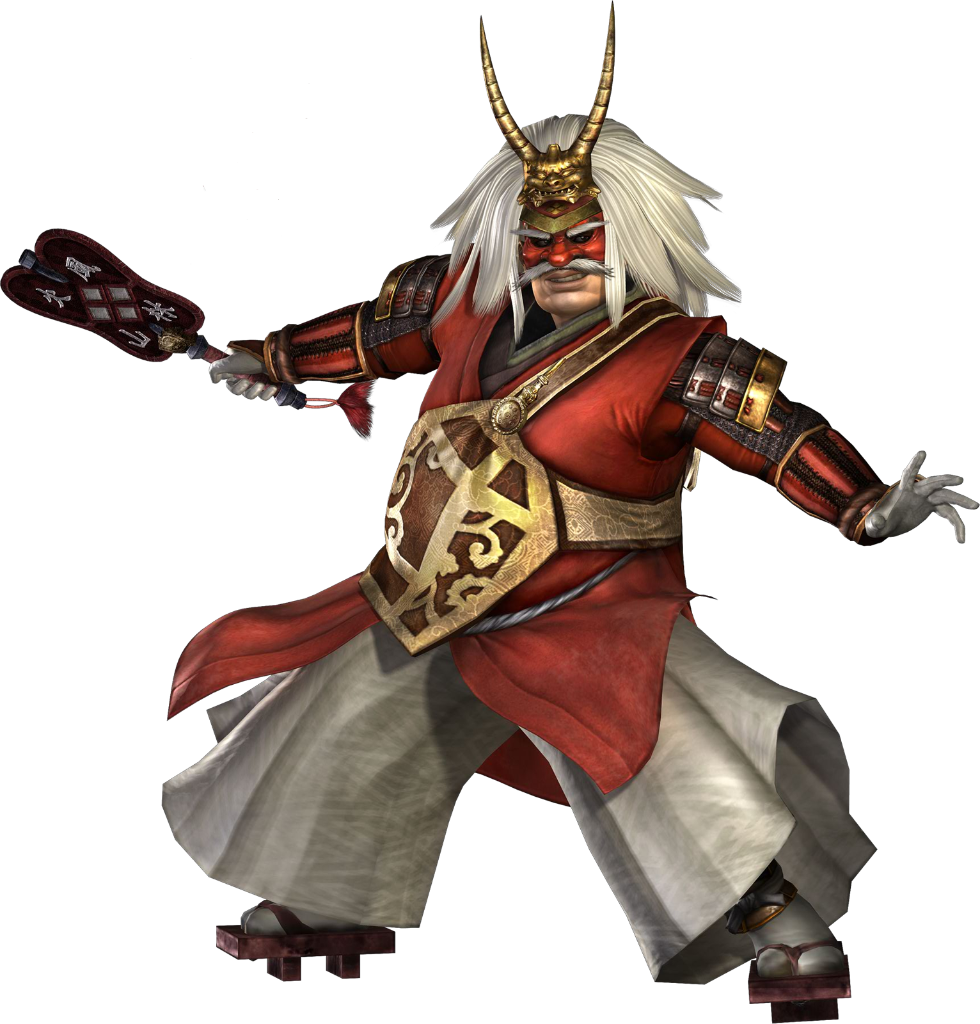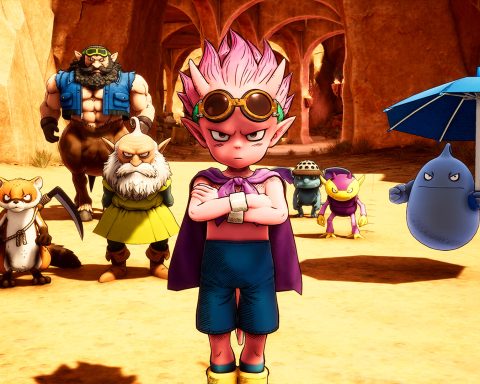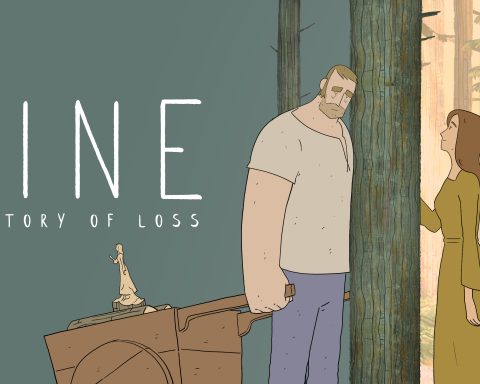 Feature by Matt S.
Feature by Matt S.
There are many people that scoff at anyone suggesting that the Warriors games are historically accurate. After all, whether it’s Samurai Warriors, Dynasty Warriors, or one of the smaller Koei Tecmo franchises (Warriors: Legends of Troy or pseudo-Warriors title, Bladestorm, for instance), we’re talking about games where a single hero, wearing outrageous costumes and wielding impossible weapons, is cutting through hordes of characters without dropping a step of speed.
And yet, historical authenticity is incredibly important to the Warriors creators, and the games are far more authentic than many would realise. Yes, they’re filled with embellishments and exaggerations, but on a symbolic level, these games are accurate in the same sense that historical novels such as Eiji Yoshikawa’s Taiko or Musashi accurately convey history; they take the base history and turn it into something that works as a fantasy, while remaining tonally and symbolically authentic. Through these kinds of entertainment products, we, the audience, learn a great deal about who was involved in the historical incidence and why they got involved, even if the blow-by-blow summary is unreliable.
At the 2014 Tokyo Game Show I was able to have a brief chat with Hisashi Koinuma, a Koei veteran who has acted across multiple roles, from lead programmer of the Kessen series, to director of the Samurai Warriors series, and producer of both Toukiden and Hyrule Warriors. He’s been with the company for much of his career, in other words, and it’s instantly understandable why; when talking about the Warriors series and its historical relevance, Koinuma is clearly passionate, relating to me Koei’s extensive heritage in historical simulations, and pointing to the massive database on the histories of Japan, China and other regions that the development teams have researched in creating their games.
“Koei has been making historical games for the past 30 years, so we have people in our teams who are absolutely experts in the history,” Koinuma said. “We also have a database of all the research that we have been building over all that time, which we draw own when creating our games.”
Mixing History And Fantastic Architecture
Following Tokyo Game Show, I took a road trip to some sites of historical significance around the Nagano prefecture in Japan (the photos in this article were taken by me). I figured I would use this trip as a chance to compare what I see in the Samurai Warriors games, when compared to the historical events.
My first stop was Matsumoto Castle, the oldest castle in Japan that hasn’t been rebuilt or renovated. In other words, what is inside that castle is what the real samurai of the Sengoku period (the time in which Samurai Warriors is set) fought within.
 |
| Matsumoto Castle |
Inside these castles are elements of design that wouldn’t have worked well with the Samurai Warriors games. The castles of Japan had small slits that would allow archers and gunmen to fire from them, safe from return fire. Being shot by arrows when attacking a castle and not being able to do anything about it would have annoyed players, so in Samurai Warriors the arrow slits aren’t used. Similarly, corridors and the like inside these castles are tight, rooms are small, and staircases are perilously shallow. It would have been a nightmare to invade these things for real, but nice, open stairways and corridors makes for some fun interior battle scenes in the Samurai Warriors games.
However, the general design of these castles, and the way that staircases slowly loop to a single room at the top of the castle that acts as the command room for a general under attack is similar between the real-life and Samurai Warriors version of the castle. Similarly, if you have played a Samurai Warriors game, you might have noticed that the castles are typically empty of furniture, art on the walls, or anything else “home-like.” This is actually accurate. Where in Europe a castle would be a place of residence as well as serve a military function, in Sengoku Japan castles served a military function only. They would provide a view of the surrounding area from high up, and be the final defensive stand for an attacking army to have to overcome. As such, beyond the storage of weapons, Japanese generals didn’t tend to keep much stuff in their castles.
 |
| Inside Matsumoto Castle |
On a purely aesthetic level, Koinuma and his team have nailed the likeness to real castles. From the design of the woodwork, to the stone patterns of the foundations, it was impressive to see the real castle in real life and immediately be able to also recall my favourite Samurai Warriors levels. The differences between these levels castles and the real deal are functional – the game wouldn’t be as much fun if it was realistic – but the authenticity and commitment to respecting the historical basis of the game is what separates Samurai Warriors from other action games set in the Sengoku period, and for the better, I think.
Recreating Battles
After touring the Matsumoto castle, I visited the battleground site of the fourth battle of Kawanakajima (1561), which was the scene of an especially famous battle between Uesegi Kensin and Shingen Takeda. Any Samurai Warriors game has it as one of the major battles, if you’d like to play along as we discuss it. It’s also a useful case study in just how authentic Samurai Warriors manages to be without being so literal that it sucks the fun out of the game.
 |
| Kawanakajima battleground today |
In the historical battle (and the battle in the Samurai Warriors games plays out the same way if the player doesn’t personally intervene to change it), Uesegi was able to take the Takeda forces by surprise. His soldiers were stationed on a mountain, and Takeda had split his own army in two and sent half of them up the mountain to sneak attack the Uesegi army at dawn. However, Uesegi realised what was going on and was able to take advantage of the split forces. History is unclear here about how it happened, but it could have been anything from spies in the Takeda army, good scouts in the Uesegi army, or even the Takeda forces being silly enough to cook meals at night, giving away their position.
Regardless of how he got the jump on Takeda, Uesegi’s counter sneak attack lead to one of the most infamous scenes in the history of the Sengoku period. Uesegi’s army was able to burst into Takeda’s command post, with Kenshin himself led the charge. There they found Shingen Takeda, taken totally by surprise, wielding nothing more than his war fan. Takeda was able to fend off three direct attacks from Uesegi before one of his retainers was able to spear Uesegi’s horse and force him to flee.
 |
| This is the view that the Uesegi forces would have had in the lead up to the battle of Kawanakajima |
And it’s through that story that we can see the character designs of both Shingen Takeda and Uesegi Kenshin. As Koinuma said, “in Samurai Warriors, just having a standard sword and spear wouldn’t make for a fun game, so we needed to come up with a greater range of weapons to make the game more interesting.” But at the same time, the Koei developers wanted to create designs that remained true to both the characters and Sengoku period in some symbolic manner.
Enter the design of Shingen Takeda in Samurai Warriors, where his weapon is, in fact, the war fan:
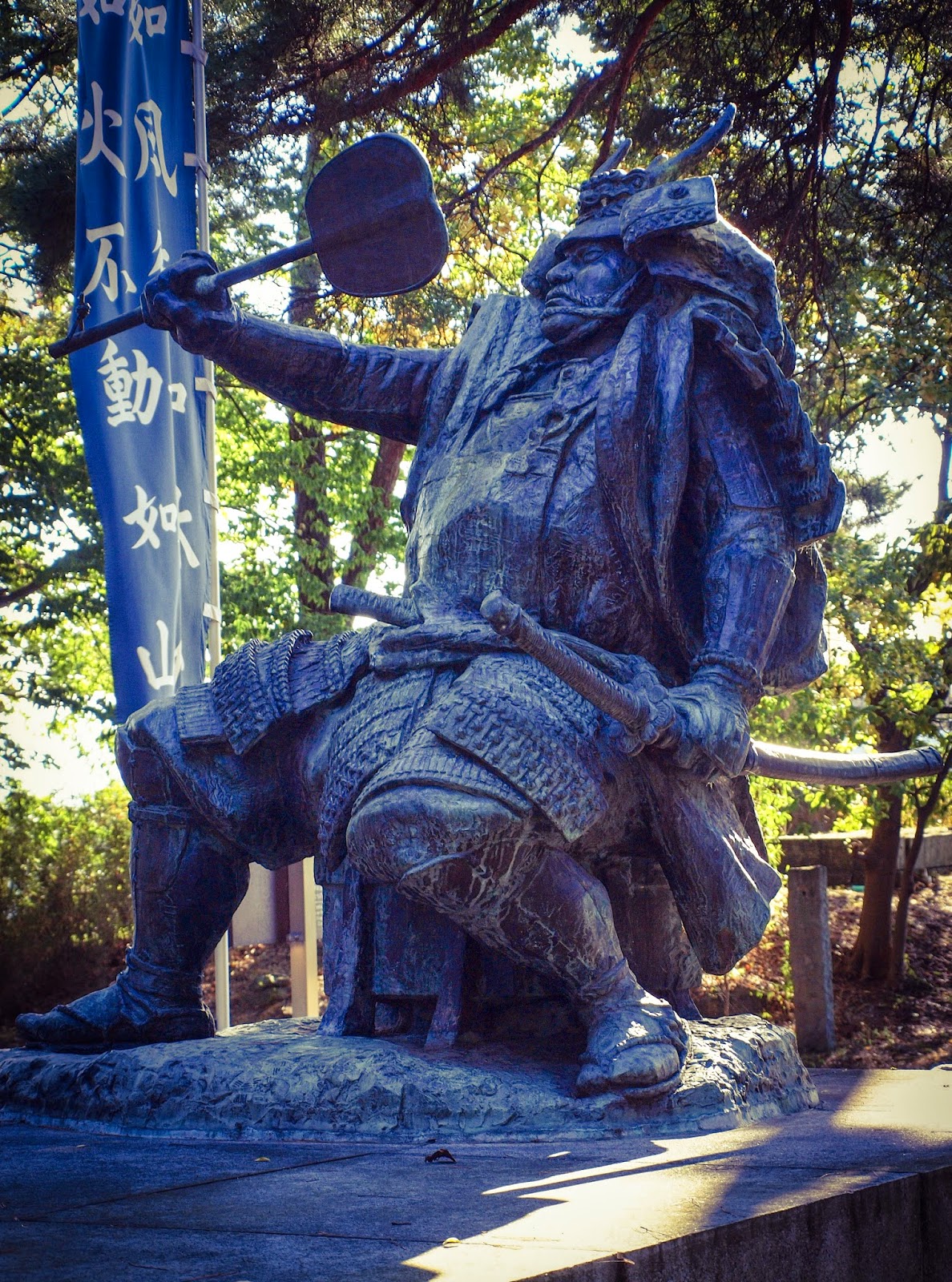 |
| Shingen Takeda statue, compare to the Samurai Warriors design. Authentic, no? |
Obviously this isn’t a realistic weapon for actual warfare, and in the fourth battle of Kawanakajima Takeda wouldn’t have used the fan if he had access to his sword (so it seems silly that in the Samurai Warriors games, he would be using this as his weapon in all his battles), but by turning it into Shingen’s weapon for the purpose of the game, the Samurai Warriors developers were able to extend the range of weapons in their game beyond the “boring” sword and spear, which still maintaining a sense of authenticity to who Takeda was and what he really did during his campaigns.
The same can be said of Uesegi Kensin, whose Samurai Warriors design is below:
This, too, is a completely fanciful take on a sword, and completely, hopelessly impractical for actual warfare. But, as with Takeda’s war fan, this sword design is related to the story of the one-on-one combat between Uesegi and Takeda. In the three attempts by Uesegi to attack Takeda that were deflected, there were seven notches left on the war fan. Notice how Kenshin’s blade in the Samurai Warriors games has seven cutting edges? It’s not coincidental. It’s a symbolic approach to authenticity, but in many ways Samurai Warriors is such a fascinating series of games because everything in the game is related in some way to what really happened hundreds of years ago. Even for the most ridiculous of weapons.
Samurai Warriors And Women
Examples of warrior women and their exploits are relatively uncommon throughout history, and Japan is no different in this regard. Women were not samurai, and while they did participate in warfare in some ways – for instance they often maintained weapons, and would later make bullets for the soldier’s guns – they were generally non-combatants (with the exception of the onna-bugeisha, or female warriors, which was a concept in decline by the Sengoku period).
 |
| More views inside Matsumoto Castle |
However, Koei Tecmo wanted a better balance of male and female characters in the Samurai Warriors series, in order to convey a wider range of motivations, emotions and viewpoints through the story, Koinuma said. “I look at all the personalities of the people of the Sengoku period, and the all have their own believes and ideas for the future, and that’s something we wanted to create in the game. We wanted to portray all the different points of view and the different ways of thinking, and reflect that in the storyline itself,” he said.
For a few female characters in Samurai, it was easy to bring them into Samurai Warriors. Kaihime (Lady Kai) did, in fact, take up arms to defend her castle and people, for instance. Another female warrior, Kunoichi, isn’t actually a name. Kunoichi is the term for a female ninja, and these also existed during the Sengoku period as a spy network commissioned by Shingen Takeda and run by Mochizuki Chiyome. So it was relatively easy to create both of these characters for the game – one was a real person and the other is the personification of a group of real female warriors.
 |
| Kaihime |
Other female roles were also easy to fabricate just slightly to give them the excuse to take up arms. For instance, Ginchiyo Tachibana may not have fought in battles, but she was the head of the Tachibana clan for five years in the absence of men to run the household (after those five years Tachibana married and the male took over the duties, as mandated by the laws of the time), and so it was also easy for the developer team to re-imagine her as a warrior.
For other characters, Koinuma and his team needed to be more creative. The perfect example here is Oichi’s story. What happened to the sister of Nobunaga Oda was so tragic and compelling that it was a story that had to be added into the game, but Oichi herself never fought in a battle. So instead the development team needed to get creative and figure out which battles she would fight in, and how she could be a part of them when there was, in fact, no place for her in the battle in history.
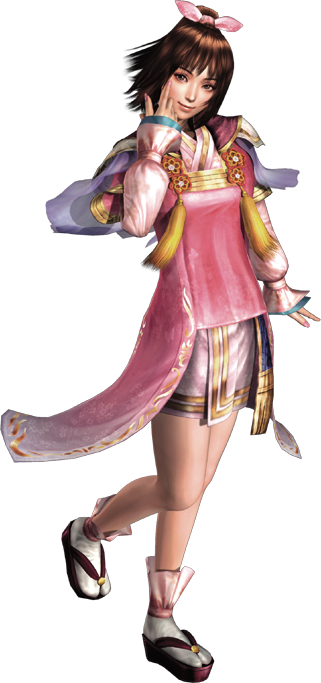 |
| Oichi |
“It’s difficult in a sense, but it’s also a lot of fun to do,” Koinuma laughed. “When we’re building our battles, we need to think to ourselves ‘if this were to happen what would take place next?’ We needed to do this so we could include new characters into the battle, and also to allow characters who were historically on the losing end to change history and win. We need to do this in a way that also won’t chance the context and importance of the battle. It’s great fun.”
Giving Traitors Honour
Beyond the female characters, Koinuma’s dedication to reflecting multiple stories and the point of view from multiple characters has led to an interesting narrative quirk where the stories that Samurai Warriors tells differ greatly from other retellings of the Sengoku period. Generally speaking, a story needs to have a villain, and those villains are usually written in the history books to be the losers. The most famous example of this happening during the Sengoku period is, of course, Akechi Mitsuhide, who rebelled against his leader, Oda Nobunaga, directly resulting in the lord’s death. Typically portrayed in a Judas-like way, the truth is much more complex – Akechi historically rebelled because of the travesties that Oda was inflicting on the population in a rule that can only be called tyrannical. Oda, in turn, had his own reasons for doing that, seeing his decisions as a path towards a united Japan where he was in command (obviously) but one that was ultimately at peace.
 |
| View from Matsumoto Castle |
Koei’s respect for the history of the time, and its heritage for creating historical simulation games such as Romance of the Three Kingdoms and Nobunaga’s Ambition has meant that the Samurai Warriors team has always resisted casting characters and heroes or villains. Instead, the game simply retells the story from the perspective of whatever character you are playing at the time, and you’re left to create your own interpretation of events. You might find Akechi’s actions reprehensible, or you might sympathise with his justification. Oda’s ambition might be the cruel musings of a despot, or the necessary evil of a visionary leader looking to unite Japan.
A good historical text doesn’t pass judgement. The Samurai Warriors franchise is, first and foremost, a fun game in which players control a hero capable of single-handedly routing an entire army. At the same time it’s one of the most symbolically authentic representations of the characters, story and history of the period.
– Matt S.
Editor-in-Chief
Find me on Twitter: @digitallydownld

